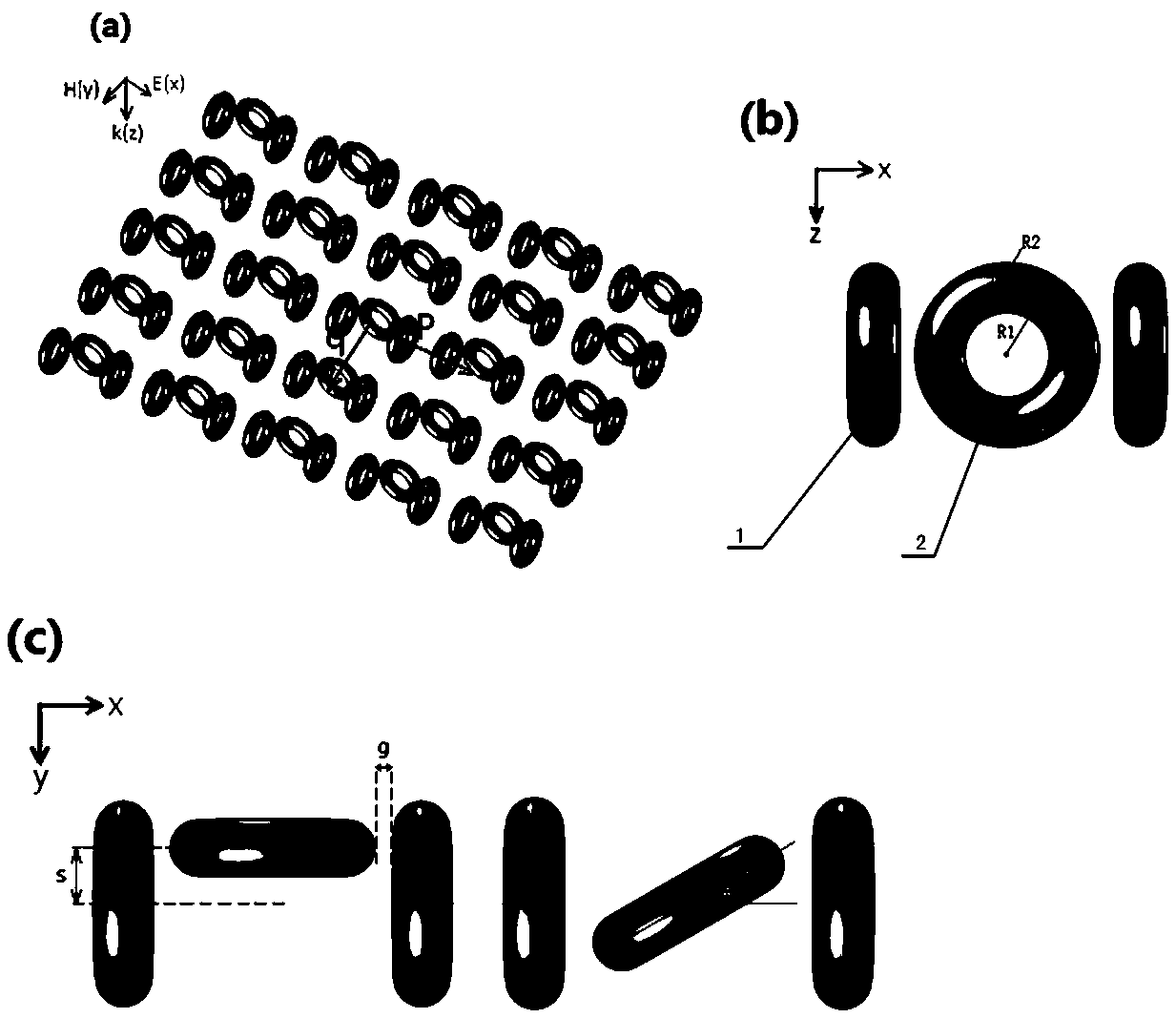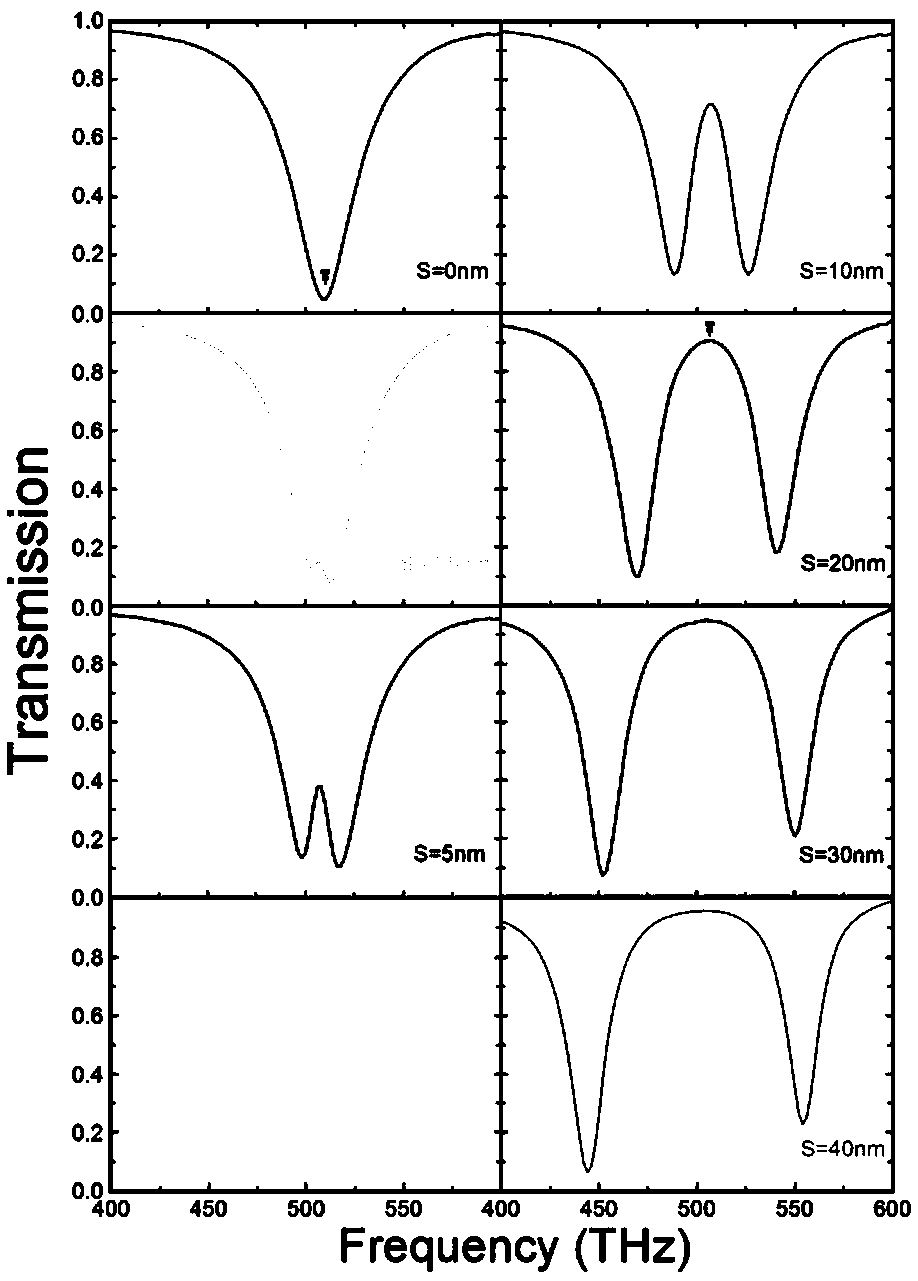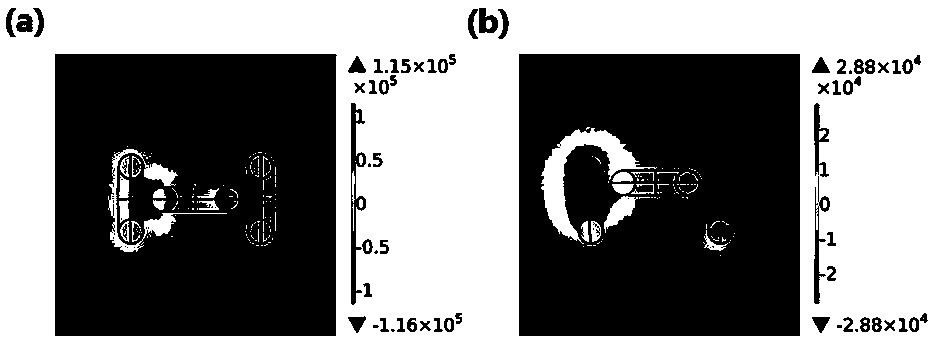A three-ring structure plasmon-induced transparent optical material and its application
A technology of plasmons and optical materials, which is applied in optics, optical components, instruments, etc., can solve the problems of complex structure design, difficult production, and restrictions on plasmon-induced transparency technology, and achieve broad application prospects and high transmission High rate, stability and reproducibility
- Summary
- Abstract
- Description
- Claims
- Application Information
AI Technical Summary
Problems solved by technology
Method used
Image
Examples
Embodiment 1
[0026] A plasmon-induced transparent optical material with a three-ring structure, consisting of a substrate and three-ring structural units arranged periodically in two dimensions on the substrate, the substrate is a quartz wafer, and the three-ring structural units include two The first metal toroid 1, the second metal torus 2 is also arranged between the 2 first metal toroids 1, the size of the first metal torus 1 and the second metal torus 2 are consistent, so The first metal torus 1 and the second metal torus 2 are made of silver, and the second metal torus 2 rotates along its z-axis space and is connected to the center of the two first metal torus 1 The space angle θ formed by the lines is 0, and the two first metal toroids 1 are symmetrically arranged on both sides of the second metal torus 2 .
[0027] The arrangement period of the three-ring structure unit includes the x-y plane period p (the distance between the geometric centers of two adjacent three-ring structure ...
Embodiment 2-8
[0030] Embodiments 2-8 are different from Embodiment 1 in that: the lateral displacement s of the second metal torus 2 relative to the line connecting the centers of the two first metal toruses 1 is 2.5 nm, 5 nm, and 7.5 nm, respectively. nm, 10 nm, 20 nm, 30 nm, 40 nm, others are the same as in Example 1.
Embodiment 9-16
[0032] The difference between Embodiment 9-16 and Embodiment 1 is that the included space angle θ in Embodiment 9-16 is respectively 10°, 20°, 30°, 40°, 50°, 60°, 70°, 80° °, the distance between two first metal toruses in the tangential direction from its adjacent second metal torus is equal, and the others are the same as in Embodiment 1.
PUM
 Login to View More
Login to View More Abstract
Description
Claims
Application Information
 Login to View More
Login to View More - R&D
- Intellectual Property
- Life Sciences
- Materials
- Tech Scout
- Unparalleled Data Quality
- Higher Quality Content
- 60% Fewer Hallucinations
Browse by: Latest US Patents, China's latest patents, Technical Efficacy Thesaurus, Application Domain, Technology Topic, Popular Technical Reports.
© 2025 PatSnap. All rights reserved.Legal|Privacy policy|Modern Slavery Act Transparency Statement|Sitemap|About US| Contact US: help@patsnap.com



